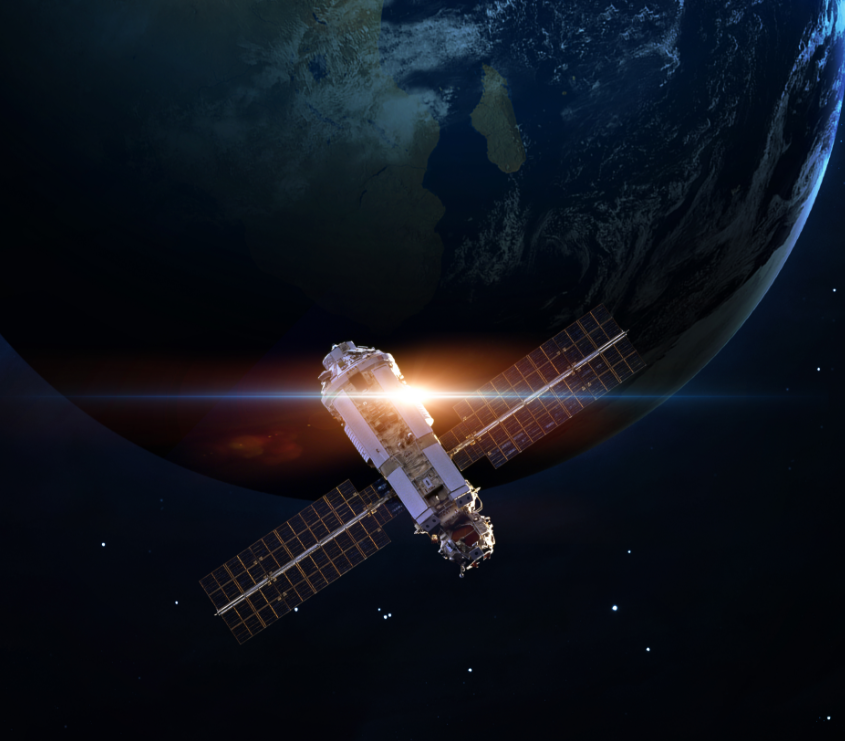About Us
OUR Mission 
We develop cost effective advanced satellite communication ground terminal, satellite module
We develop cost effective advanced satellite communication ground terminal, satellite module (internet and mobile phone relay nodes) for LEO (Low Earth Orbit), handheld Satcom devices, 5G mobile phone tower and ultra sensitive communication receivers
Our technology addresses critical challenges of the 2 emerging wireless communications systems:
- LEO-SATCOM and 5G mobile phone/internet
- The high data bandwidth and speed rate will have tremendous impact
- Big Data and data transfer applications such as remote learning (Education)
- Remote healthcare (remote surgery/patient consultation)
- Remote career (professionals working from home or else), the defense industry, etc.


About Us 
- US Air Tech dba USAT is an innovative technology company that is breaking into the satellite communication space with an IP protected new approach in Satcom antenna development and a new concept in the receiver module. The antenna is a Luneburg lens antenna, a solution proposed in 1944 by Rudolf Luneburg to achieve a specific refractive index (resistance to light or radio frequency propagation) gradient arrangement within a geometrically spherical material (and other geometrical form). The fabrication of such lens, which radial structure must follow a mathematical model, had been challenging since the theoretical invention of this lens.
- Dr. Gbele was part of the team who first demonstrated the possibility of a 3D fabrication of such complex lens in 2012 at the University of Arizona. The first lens was developed in X-band frequency (8 to 12 GHz) and soon after the first Q-band (33 to 50GHz) lens antenna was developed by Dr. Gbele. Technical papers were subsequently published with the IEEE. These breakthrough in 3D printing development of the Luneburg lens opened a pathway to outstanding explorations of this lens to researchers around the Globe.
- USAT is leveraging its pioneering role in this particular set of antennas, to solve problems encountered in satellite communication and 5G cellphone that arise from a high data volume throughput and data rate speed demands, signal degradation and fading due to atmospheric scattering/absorption of signal from satellite to ground, etc.
- The unique design of this lens antenna and its proprietary accompanying accessories design endowed the antenna with an unmatched scanning aperture capability in azimuth over 180 degree) and in elevation (180 degree), a radiation beam pattern / polarization control that mitigate network vulnerability, enhance security by preemptively closing capability gaps in tactical communication, eluding eavesdropping and resilient to jamming. The assembled antenna unit has several superior characteristics (EIRP [Effective Isotropic Radiated Power], G/T [Gain to Noise Temperature], etc. ) that provide an overmatch to numerous defense industry specifications. Commercial applications are hence better served and at low cost.
- The receiver, a patent pending technology, is an approach that departs from the generic concept, i.e. concept using HEMT (High Electron Mobility Transistor). The extremely low level of incoming signal from orbiting satellite is extracted from multitude ambient noises using a proprietary technique.
- The receiver concept improves dramatically the SNR (Signal to Noise Ratio), offers a decisive advantage over current LNBs (Low Noise Block Downconverters) for the signal processing after reception and provides an excellent BER (Bit Error Rate). With the invention of this unique receiver, Electromagnetics signal low noise receiver (LNA) have been domesticated and have found new home with USAT.
- USAT is R&D (Research and Development) focused with a deliberate sense of exploring uncharted grounds. Researchers at USAT are guided by solid scientific intuition to produce results. They operate with ethics. They have an endless thirst of bringing good to our society and to improve life quality. USAT Researchers aim to enjoy the satisfaction of contributing to something larger than themselves.
